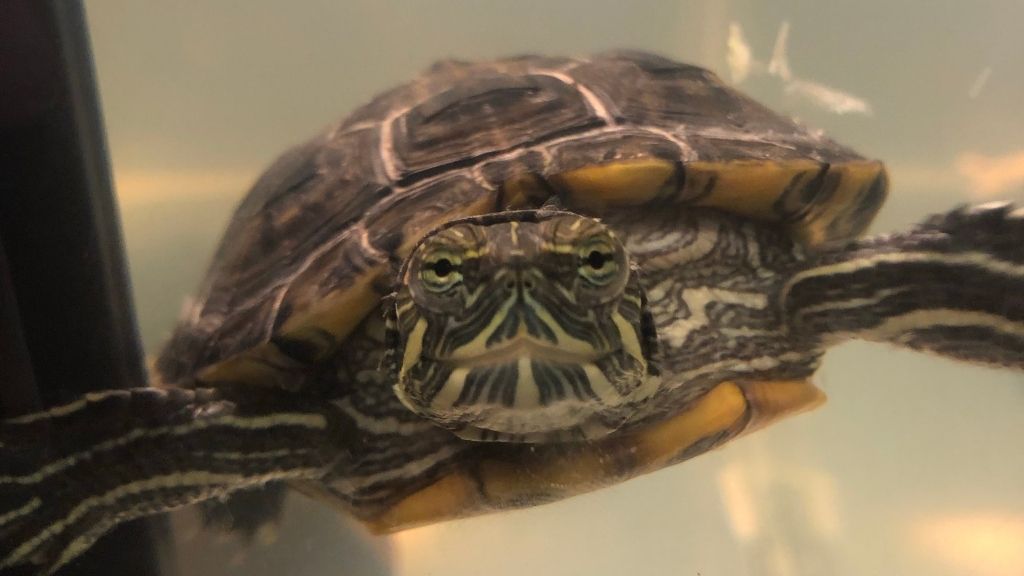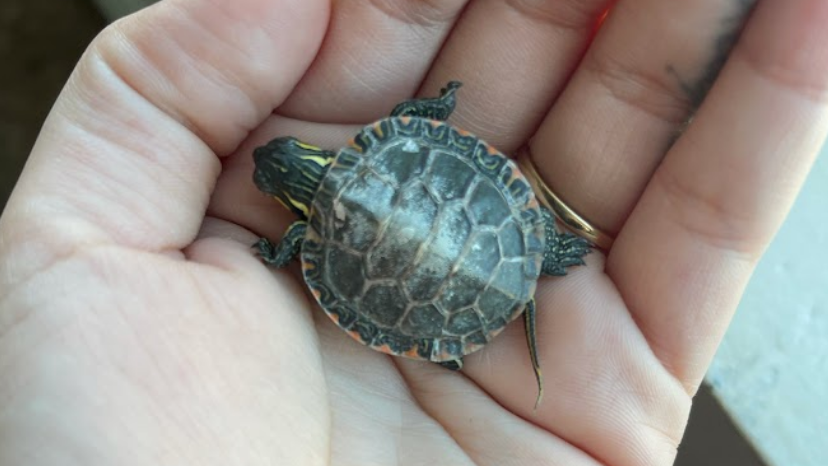If you’ve ever wondered about the best way to keep your adorable baby turtles healthy and fungus-free, then look no further. In this informative article, we’ll explore the crucial role that water depth and filtration play in preventing fungal infections in these tiny reptiles. Whether you’re a seasoned turtle enthusiast or a new owner looking for helpful tips, this article is a must-read for anyone concerned about the well-being of their baby turtles. So, let’s dive in and discover the secrets to keeping those little shells healthy and shiny!
The Importance of Water Depth
When it comes to caring for baby turtles, maintaining suitable water depth is crucial. Baby turtles require water in their enclosure that is deep enough for them to swim and dive, but not too deep that it becomes a safety risk. Providing the right water depth is essential for their overall health and well-being.
Suitable Water Depth for Baby Turtles
The ideal water depth for baby turtles should be shallow enough for them to easily reach the surface for air but deep enough for them to swim and exercise their natural behaviors. The depth should be at least twice the length of their shell, allowing them to fully submerge and move around comfortably. This depth also ensures proper hydration and helps them regulate their body temperature effectively.
Management of Water Level
To ensure the water depth is suitable and maintained properly, it is important to regularly monitor and adjust the water level as needed. Evaporation and splashing can cause the water level to decrease over time, so it’s essential to keep an eye on it and make necessary adjustments. Using a water measuring device or marking the desired water level on the enclosure can help in maintaining consistency.
Impact of Inadequate Water Depth
Inadequate water depth can have negative effects on baby turtles. If the water is too shallow, they may have difficulty swimming, which can lead to muscle weakness and improper development. Additionally, inadequate water depth may limit their ability to fully submerge and carry out natural behaviors like diving and hunting for food. This can result in stress and boredom, affecting their overall health and quality of life.
The Significance of Filtration
In addition to proper water depth, filtration systems play a crucial role in maintaining the health of baby turtles. Filtration helps prevent the growth and spread of fungal infections, among other benefits. Understanding the different types of filtration systems and their mechanisms is essential for creating a clean and safe environment for baby turtles.
Types of Filtration Systems
There are three main types of filtration systems commonly used for baby turtle tanks: mechanical, biological, and chemical filtration. Mechanical filtration involves removing debris and solid particles from the water, while biological filtration relies on beneficial bacteria to break down harmful substances. Chemical filtration utilizes substances like activated carbon to remove chemicals and impurities from the water.
Mechanisms of Filtration
Mechanical filtration works by passing the water through a filter media that traps particles and debris, preventing them from circulating in the tank. Biological filtration involves cultivating beneficial bacteria that naturally break down harmful substances like ammonia and nitrites, converting them into less harmful compounds. Chemical filtration uses substances that adsorb or neutralize chemicals and impurities in the water, improving its overall quality.
Benefits of Filtration in Preventing Fungal Infections
Effective filtration systems play a vital role in preventing fungal infections in baby turtles. These systems help maintain water clarity and quality, reducing the risk of pathogenic organism growth. By removing particulate matter, harmful bacteria, and fungi, effective filtration minimizes the chances of fungal infections. Furthermore, clean and well-maintained water helps promote overall health and well-being in baby turtles.
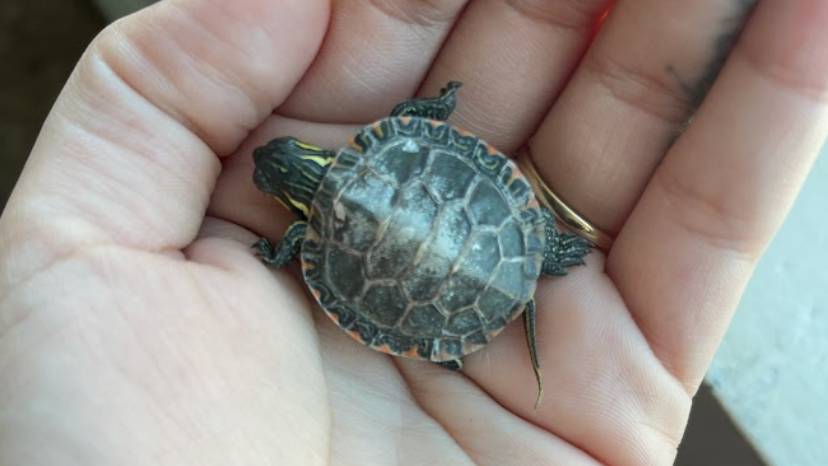
Understanding Fungal Infections in Baby Turtles
Fungal infections are a common concern for baby turtles, and understanding their causes, symptoms, and potential dangers is essential in preventing and treating these infections.
Causes of Fungal Infections
Fungal infections in baby turtles are often caused by poor water quality and unsanitary conditions. Insufficient filtration, inadequate water depth, and improper hygiene practices can create an environment where fungi thrive. Fungi can enter the turtle’s body through open wounds, which may result from injuries or rough handling.
Symptoms and Effects
Symptoms of fungal infections in baby turtles may include white or gray patches on their skin or shell, changes in behavior, loss of appetite, and lethargy. If left untreated, these infections can lead to serious health complications, such as shell rot or systemic infections. Fungal infections can weaken the immune system, making the baby turtles more susceptible to other diseases and infections.
Potential Dangers to Baby Turtles
Fungal infections pose significant dangers to baby turtles. They can cause discomfort, pain, and even lead to the deterioration of their health. If left untreated, fungal infections can progress and become life-threatening. It is crucial for turtle owners to be vigilant and take necessary measures to prevent and treat fungal infections promptly.
Optimal Water Parameters to Prevent Fungal Infections
Maintaining optimal water parameters is essential in preventing fungal infections and promoting the overall health of baby turtles. Temperature, humidity, pH level, and water quality are important factors to consider.
Temperature and Humidity
Baby turtles require a specific temperature range and humidity level to thrive. Most species of baby turtles prefer a water temperature between 75 to 85 degrees Fahrenheit (24 to 29 degrees Celsius). Maintaining proper humidity levels, typically around 80%, helps prevent the drying out of their skin and respiratory issues.
pH Level and Chemical Balance
The pH level of the water should be within the appropriate range for the specific species of baby turtle. Generally, a pH level between 6.8 and 7.8 is suitable for most baby turtles. It is crucial to regularly test and adjust the pH level to ensure it remains within the recommended range. Additionally, monitoring and maintaining the chemical balance of the water, such as ammonia and nitrite levels, is crucial for preventing stress and fungal infections.
Water Quality Testing
Regular water quality testing is essential for maintaining optimal conditions for baby turtles. Testing kits can be used to monitor the levels of ammonia, nitrites, nitrates, and other water parameters. Timely identification of any irregularities allows for necessary adjustments to prevent the growth of harmful bacteria and fungi.
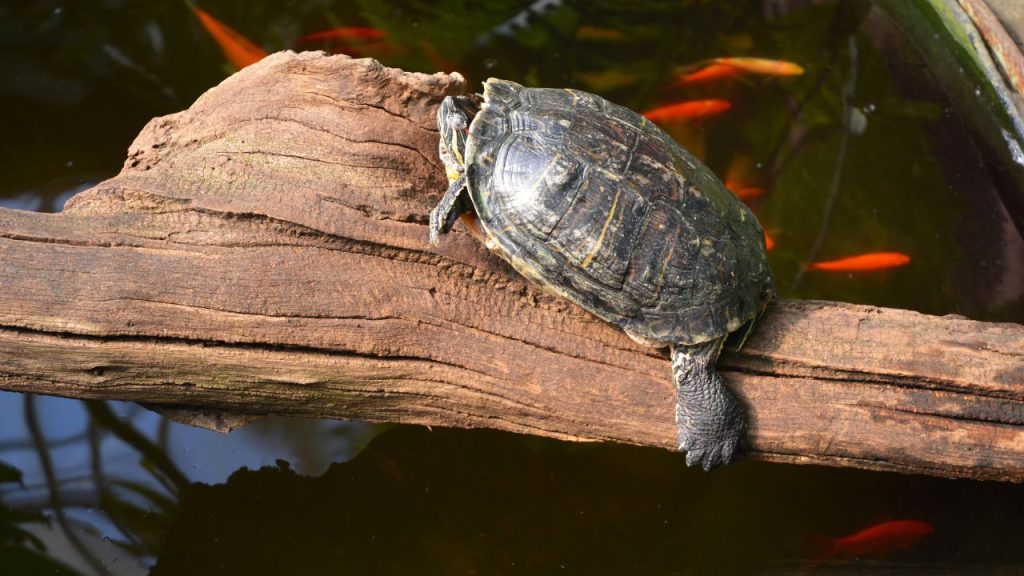
The Role of Water Depth in Minimizing Fungal Risks
Proper water depth plays a significant role in minimizing the risks of fungal infections in baby turtles. It contributes to their natural behaviors, helps avoid skin contact with wet substrates, and prevents stress and immune system weakness.
Promoting Natural Behaviors
Adequate water depth allows baby turtles to exhibit their natural behaviors, such as swimming, diving, and exploring their environment. These activities not only provide exercise but also help maintain healthy shell and skin conditions. By simulating their natural habitat, baby turtles are less likely to experience stress and develop fungal infections.
Avoiding Skin Contact with Wet Substrates
Insufficient water depth may lead baby turtles to spend more time on wet substrates, increasing the chances of fungal infections. Direct and prolonged contact with damp or dirty substrates can create a favorable environment for fungi to grow and thrive. By ensuring adequate water depth, the risk of skin contact with wet substrates is minimized.
Preventing Stress and Immune System Weakness
Inadequate water depth can cause stress and weaken the immune system of baby turtles. Stress compromises their ability to fight off infections, including fungal infections. By maintaining suitable water depth, baby turtles experience less stress and have a stronger immune system, reducing the risk of fungal infections and other health issues.
Maintaining Adequate Water Depth for Baby Turtles
Maintaining the appropriate water depth for baby turtles involves selecting the right enclosure size, monitoring the water level, and addressing factors like evaporation and splashing.
Sizing and Choosing the Right Enclosure
Choosing the right enclosure size is essential in providing adequate water depth for baby turtles. The enclosure should be spacious enough to accommodate their growth and have a water area that meets the recommended depth requirements. As baby turtles grow, it may be necessary to upgrade the enclosure to maintain suitable water depth.
Water Level Monitoring and Adjustments
Regular monitoring of the water level is crucial in maintaining adequate depth. Evaporation and splashing can cause the water level to decrease over time. Installing a water measuring device or marking the desired water level allows for easy monitoring and adjustment. Keeping the water level consistent ensures the baby turtles have the appropriate habitat to swim and move around comfortably.
Dealing with Evaporation and Splashing
To combat evaporation and splashing, it may be necessary to add water to the tank periodically. Using a lid or cover can help reduce water loss due to evaporation. Similarly, adjusting the water flow of filters or adding baffles can prevent excessive splashing. By addressing these factors, the water depth can be maintained at a suitable level for baby turtles.
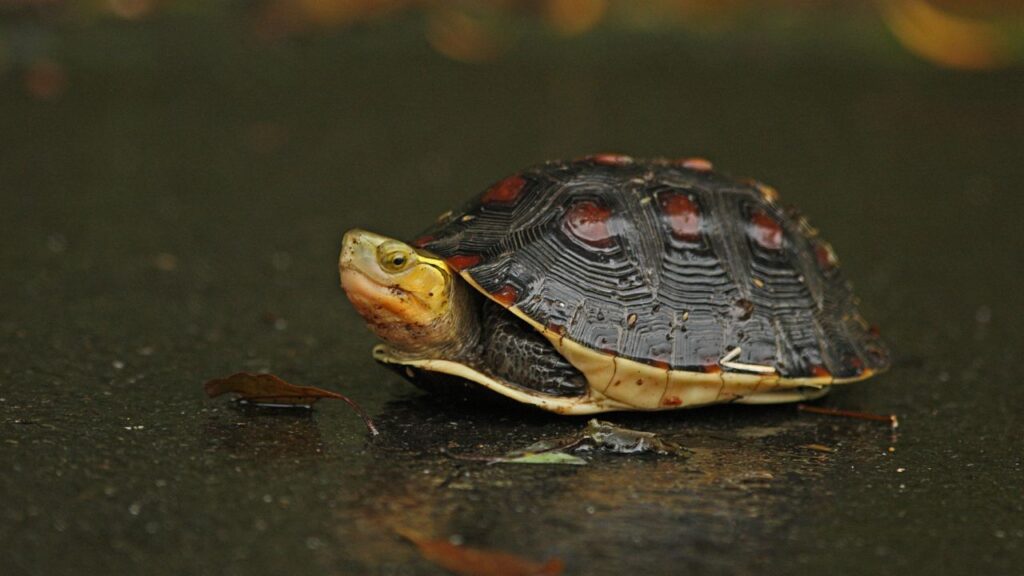
Types of Filtration Systems for Baby Turtle Tanks
Choosing the right filtration system for baby turtle tanks is crucial in maintaining clean and healthy water. Mechanical, biological, and chemical filtration all play important roles in providing optimal water quality.
Mechanical Filtration
Mechanical filtration removes debris and solid particles from the water. It is typically achieved through the use of filter media such as foam pads or filter cartridges. The media captures large particles, preventing them from circulating in the tank and contributing to poor water quality.
Biological Filtration
Biological filtration relies on beneficial bacteria to break down harmful substances in the water. It involves the use of filter media specifically designed to promote the growth of these beneficial bacteria. The bacteria convert ammonia and nitrites, which are toxic to turtles, into less harmful compounds that can be safely eliminated from the tank.
Chemical Filtration
Chemical filtration utilizes substances like activated carbon to remove chemicals and impurities from the water. The activated carbon adsorbs these substances, improving water clarity and quality. Chemical filtration is particularly effective in removing toxins and odors, contributing to a healthier and more enjoyable environment for baby turtles.
Mechanisms of Filtration to Ensure Water Quality
Understanding the mechanisms of filtration is key to maintaining optimal water quality for baby turtles. Removal of particulate matter, elimination of harmful bacteria and fungi, and neutralization of chemical impurities are essential aspects of filtration.
Removal of Particulate Matter
Mechanical filtration is primarily responsible for removing particulate matter from the water. As the water passes through the filter media, it traps debris, uneaten food, and other solid particles. This prevents them from circulating in the tank, ensuring cleaner water and reducing the risk of fungal infections.
Elimination of Harmful Bacteria and Fungi
Biological filtration plays a crucial role in eliminating harmful bacteria and fungi. Beneficial bacteria break down ammonia, nitrites, and other waste products produced by baby turtles. By converting these substances into less harmful compounds, biological filtration helps maintain a healthier environment and reduces the chances of fungal infections.
Neutralization of Chemical Impurities
Chemical filtration, particularly through the use of activated carbon, helps neutralize chemical impurities in the water. These impurities can come from various sources, such as tap water or chemicals used in the enclosure. By adsorbing these substances, activated carbon improves water quality and prevents potential harm to baby turtles.
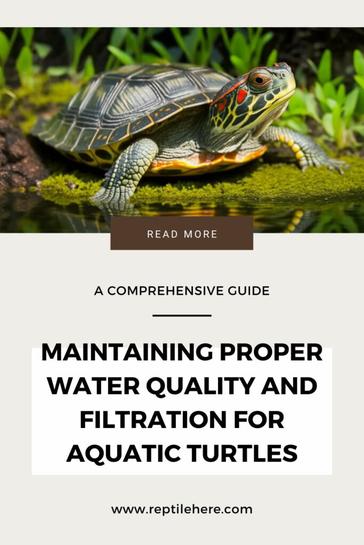
Benefits of Effective Filtration in Preventing Fungal Infections
Effective filtration systems offer a range of benefits that contribute to preventing fungal infections in baby turtles. Improved water clarity and quality, reduced risk of pathogenic organism growth, and enhanced overall health and well-being are among these benefits.
Improved Water Clarity and Quality
Effective filtration systems ensure improved water clarity by removing particulate matter and impurities. Clear water allows better visual monitoring of baby turtles, making it easier to identify any potential health issues promptly. Moreover, clean water improves the overall aesthetics of the enclosure, allowing baby turtles to thrive in a visually appealing environment.
Reduced Risk of Pathogenic Organism Growth
Proper filtration greatly reduces the risk of pathogenic organism growth, including fungi, in baby turtle tanks. By removing organic matter and providing optimal water conditions, filtration systems create an environment that discourages the growth and spread of harmful microorganisms. This significantly minimizes the chances of fungal infections and other diseases.
Enhanced Overall Health and Well-being
Clean and properly filtered water promotes the overall health and well-being of baby turtles. By eliminating harmful substances, filtration systems ensure a healthier environment for them to thrive. Improved water quality reduces stress, strengthens the immune system, and supports proper shell and skin development. All of these factors contribute to the overall health and vitality of baby turtles.
The Necessity of Regular Maintenance and Cleanliness
Regular maintenance and cleanliness are essential for ensuring the effectiveness of filtration systems and preventing the growth of biofilm and algae.
Routine Filter Cleaning and Replacement
Regular cleaning and replacement of filter media are necessary to maintain optimal filtration. Mechanical filter media should be cleaned or replaced periodically to prevent clogging and maintain water flow. Biological filter media should be handled with care to preserve beneficial bacteria, but may occasionally need to be rinsed or replaced if they become excessively dirty or degraded. Chemical filter media, such as activated carbon, should be replaced according to the manufacturer’s recommendations.
Monitoring and Adjusting Filtration Parameters
Monitoring filtration parameters, such as flow rate and water turnover, is crucial in ensuring proper filtration. It is important to regularly check the flow rate of filters and adjust them if necessary to maintain optimal filtration efficiency. Adequate water turnover, which is the rate at which water is circulated through the filtration system, helps ensure all the water in the tank is effectively filtered within a reasonable time frame.
Preventing Biofilm and Algae Build-up
Biofilm and algae can develop over time in the tank and on filter media, compromising the effectiveness of filtration. Regular cleaning of the tank surfaces and filter media helps prevent the accumulation of biofilm and algae. This can be done using gentle scrubbing and rinsing with dechlorinated water. Additionally, controlling lighting and nutrient levels can help inhibit the growth of algae in the tank.
In conclusion, maintaining proper water depth and utilizing effective filtration systems are essential in preventing fungal infections in baby turtles. Suitable water depth promotes natural behaviors, prevents skin contact with wet substrates, and minimizes stress and immune system weakness. Filtration systems remove debris, harmful bacteria, and fungi from the water, improving its quality and reducing the risk of fungal infections. By understanding the importance of water depth and filtration, turtle owners can provide a clean and healthy environment that supports the well-being of their baby turtles.
